Land of Frankincense
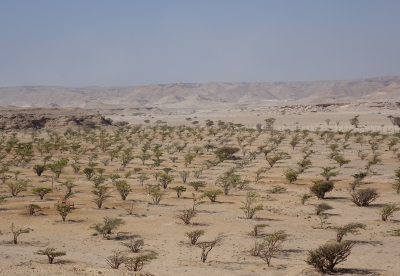
The Land of Frankincense includes frankincense trees, the remains of a caravan oasis and two ports, which were crucial to the incense trade.
Frankincense was one of the most luxurious trade items in Antiquity and its production and trade flourished in this region for centuries. The products from Wadi Dawka were transported to the fortified ports of Khor Rori and Al Baleed and the desert outpost of Shisr. Al Baleed was a stop along the ´Silk Road to the Sea´. Frankincense is still harvested in Wadi Dawka.
Community Perspective: these sites lie in the far south of Oman, so require a domestic flight to Salalah or a 1,050km drive through the desert to reach from Muscat. Visiting them all will take several days by rental car.
Map of Land of Frankincense
Community Reviews
Clyde

I visited this WHS in December 2020 over several days during my extended road trip in Oman and it turned out to be a real highlight of our trip which would certainly warrant a revisit to Southern Oman any time (perhaps apart from the wet Khareef season).
I visited all 4 components which make up this WHS on separate days. All 4 locations have UNESCO markers just next to their entrances.
The first component I visited was that of Ubar after a long drive from the delisted Al Wusta Arabian Oryx Nature Reserve. I consciously decided to risk the one hour long unpaved road to the Archaeological Site of Ubar as I wanted to venture as far as possible into the Empty Quarter. The drive with a 2WD sedan car was bumpy but perfectly doable. Just make sure to have a spare tire and loads of water in your car just in case something goes wrong (you're likely to see camel skeletons along the way clearly showing what happens if you end up without water in the desert!). If you're visiting from Salalah instead of from Muscat or Duqm, there's a perfectly paved road now and it's just over an hour drive from Wadi Dawkah. On the way, just before arriving at the Ubar Archaeological Site, the green crop circles in the desert are worth a stopover. The lost city of Ubar was relatively recently discovered through high-tech satellite imagery. In total there are some 15 stone structures remaining. The lost city was built on a large limestone cavern that due to the weight of the city and earthquakes collapsed into a sinkhole (now full of bats). Recent restoration works have secured the limestone with metal pillars and concrete and information boards and a very small visitor centre try to explain the site's importance along the ancient trade routes of frankincense. The site's size and remains pale in comparison with the other cultural components of this WHS but it's still a worthy addition. It just wouldn't be a wise choice to pick this site and Wadi Dawkah only as the other two would in my opinion be worthy of inscription even on their own.
The component of the Frankincense Park of Wadi Dawkah is around 45 minutes away from Salalah and is more of a natural component which enables you to experience how frankincense is sourced. After parking your car, head down the stairs or ramp and proceed on the right where you'll notice a source of water which is used to irrigate the several frankincense trees. The handful of older frankincense trees closest to the source though are usually used to demonstrate how frankincense is tapped as the frankincense trees require around 8-10 years before they reach the production phase (some 3 to 4 kg of frankincense per season per tree!). The peak season to visit is around April when the trees are also in bloom, but if you keep you're eyes peeled, even in December-January you're likely to find some trees in bloom so that you can see all the different stages of growth. I think that a visit to the modern night market in Salalah should be of great value added to be able to see and smell the four different kinds and varying quality of Omani frankincense: Shizri, Shaabi, Nejdi and Al Hawjri - the latter supposedly being clearer, whiter and of the best quality.
While the first two components described so far require just under an hour at most to visit, the next two components require at least half a day each. The Archaeological Site of Sumhuram in the Khor Rori Nature Reserve was once the heart of the world's frankincense trade, shipping thousands of tonnes to Europe, China, India and Africa. This ancient city was once the hustle and bustle of Arabia, with merchants trading in other commodities such as silk, cotton, bronze, copper and spices. In the port there was a sea gate, a secondary entrance to the city used for goods being imported and exported. There is a vast store house complex composed of long chambers, where frankincense used to be stored before being loaded on board the ships. Inscriptions in the main huge structure give clues which indicate that the city was built to reinforce its people's control over the frankincense trade. Camels still roam around freely, much as they did some 2,000 years ago. If you have enough time, allow some time for a great hike to reach the sea on foot. You'll be rewarded with abundant birdlife and beautiful natural scenery, apart from minor archaeological remains. The minor on-site museum is worth visiting but the best artefacts found here are housed in the Museum of Frankincense near the Al Baleed Archaeological Park. I allowed repeat visits as I had plenty of time and also explored inland, on the other side of the highway, to a superb hike to Wadi Darbat waterfalls reaching the biggest waterfall which is visible from afar from the highway.
Last but not least, I did repeat visits of the Al Baleed Archaeological Park. Since there were practically no tourists around, the entrance from the great sandy beach next to the Al Baleed Resort was left open as a recent cyclone had swept away the gates. Most decorative pillars (such as the one with the fleur-de-lis decoration), stone incense burners and ornate tombstones which before were left outside have now been transferred inside the Museum of Frankincense. Still, the archaeological site is really huge and most of it still remains to be excavated and uncovered! The biggest structures you definitely won't miss are the citadel, the remains of the mosque with its many columns and nearby tombstones, and the substantial sea wall which extends for over a kilometre. There are wooden pavilions where you can have a good overview of the site while seeking some shade and a great beach to relax in after having covered enough ground. All in all, this is really a great WHS and the Dhofar region was a great surprise I managed to explore quite well thanks to the COVID-19 travel ban which meant I had to extend my holiday.
Els Slots

The Land of Frankincense is a good reason to visit the Dhofar region in southern Oman. I flew from Muscat to its capital Salalah and stayed there for 3 nights. Date palms give way to coconut palms and sandy white beaches, which reminded me of Sri Lanka. It’s not an uncommon sight here to see camels crossing the motorway or a camel caravan moving along through the desert. (Frank)incense is everywhere here in the south: stepping into the modern Salalah Garden Mall, the smell already comes to you. The local Al-Husn Souq only sells typical Omani hats and frankincense resin per kilo.
In the outskirts of Salalah lies the Al-Balid Archaeological Park with its Land of Frankincense Museum, 1 of the 4 locations that comprise this WHS. I spent 1.5 hours there in the late afternoon (it's open till 8 p.m.), a perfect time to enjoy its setting of ruins and birds via the walking trails. Al-Balid was a port, so its remains are located near the water. The archaeological site is quite extensive, with a citadel and a grand mosque.
The next day I drove to a second location, the 'incense forest' Wadi Dawkah, a 45-minute drive north of Salalah. Here incense has been cultivated since ancient times, and the forests are still in production. To make the place – which essentially is an agricultural field - more attractive for visitors, they have added parking spaces, an information panel, and public toilets. I even wasn't the only tourist here: after me, a couple with their guide made a quick stop.
The incense is extracted in a similar way to rubber: by cutting slices into the trees, causing the resin to leak out and dry. Only after a number of cuts do you get good quality incense resin. The name 'forest' suggests something natural, but it is more like a plantation where the trees are nicely planted in a row and watered by garden hoses. You can just walk among the trees. Only at a single tree did I see some resin. The trees were in a pretty light green blossom though. A visit takes half an hour at most, but I found it worthwhile.
On my last day in the south, I drove the coastal route to the interesting town of Mirbat, including a stop at the lagoon of Khor Rori and the excavations of Sumhuram. Again this is a neatly laid out archaeological site, with paths and information panels. Especially the location here is very beautiful - from the higher ruins of the fortress, you have a view of flamingos and the sea bank that cuts off the lagoon from the sea.
I skipped the 4th location (Shisr) because I didn't think the long drive would be worth it. The history of the cultivation of and trade in incense cannot be seen anywhere else in the world as easily as here in Dhofar, so it certainly is an educating WHS. Ethiopia and Somalia are the largest producers of fine resin nowadays, so maybe more intensive cultivation can be seen there. Fun bit of trivia: the latter provides the Roman Catholic Church with most of its stock.
Chris
My road trip in Oman brought me to all the 4 places. Two of them, the Wadi Park and Shisr I visited during the drive from Salalah to Muscat.
The wadi is nice, you can see the trees up close. It seemed to me sometimes guides tours are done but i could not see anyone so just wantered a bit around.
Shisr, is it worth it to go? It's a 3-4 hour drive on gravel roads (ok, i guess there is a tarmac road but that's not fun). I though it was, the place is small. An 30 minutes you see most of it for sure. Some background information is given. we did not see any other visitors when we were there.
see some photos on the link below.
Read more from Chris here.
Kingsley and Ruth Flint
We were thrilled by this ancient site, its location, and the setting. Much recent work has been done it seems to make it more welcoming and informative to visitors. We also thought it reminiscent of great cities we have seen before, such as Mycenae. The Omanis wantyou to know that they are not a modern tribal sheikhdom, but an ancient and authentic culture, and they have made great and obvious efforts to bring out that history amd make the place both beautiful clean and inviting to serious tourism. We highly recommend making theflight down from Muscat to Dhofar if only to see the wonderul scenery, birdlife and this amazing ancient monument, which fills in so many of the gaps in lay appreciation of history in the region, the trading by sea in ancient times between the Greeks, Egyptians, indus valley, etc. cultures. The frankincense connection is often overlooked. The scenery around this site is also breathtaking.
Anthony M. Fischer
United States of America - 24-Oct-12 -
I had to good fortune to travel to this part of Oman during my time in the US Army. It was the spring of 1997. After spending a month at the NCO Academy at Fort Campbell, Kentucky (the best three days of training ever crammed into one month) in the late winter (the ultimate definition of bleak and damp), the balmy coastal weather and dry mountain air of our camp were much needed.
Our deployment kept us too busy to visit the sites listed here. The closest we came to something like those described in the other reviews was a 14th century mosque being excavated on the outskirts of Salahlah by a German team of archaeologists. They graciously gave us a tour of the site which was very interesting, especially in terms of the burned roof timbers. The site was near the beach, but that is about all I can recall.
Lovely landscape, warm temperatures in the spring, great people, and wonderful drives in the mountains. We had a great airborne operation on the beach and I even got to meet the Crown Prince, now King, of Jordan. Go to Oman and enjoy. I wish I could...
John booth

Over Christmas 2011 we visited all four of the designated areas of this site by car from Al Ain (UAE). We also visited Mirbat, another port associated with the frankincense trade, also site of the Battle of Mirbat, where in 1972 9 British & Fijian SAS soldiers held off 400 Yemeni attackers. Mirbat will soon be connected to Muscat by a coastal road, a more scenic but slower route to Salalah than that across the desert.
Jarek Pokrzywnicki

Visited, December, 2010. All components but as other locations (Al-Balid, Wadi Dawkah and Sumhuram) are easily accessible I will focus on the lost city of Ubar.
Shisr or Ubar (Wubar) can be visited by normal car right now. If driving from Salalah just go around 40 km north of Thumrayt where you can take well sealed road to Shasar (oficial name of Shisr at least on roads signposts) total lenght is around 50 km where at least half of it is asphalted, the rest is normal dirty Omani road but accessible on normal car. I doubt if there is any form of public transport to get to the village.
The site is really for the most desperate persons, not very spectacular but at least interesting enough to make a journey. It is well marked with plates and descriptions of seperate archeological findings (Arabic and English), fenced and yet free of charge. As there are speculations if the place is really Ubar you can decide on your own. For me the most spectacular place there was a huge cave partly colapsed - main reason for abandoning the place. Photo attached shows the remains of the fortress or an administrative structure (upper part of the city).
David Robinson
I, and my wife who is a classical scholar, have visited the remarkable site at Sumurham several times. The whole site is reminiscent of several ancient sites in Greece The 'gate' is very similar to the lion gate at Mycenai, and the plaque on one wall which is inscribed in what, we suppose, is ancient Phonecian. These similarities indicate clearly that Sumurham was once an important trading centre. It well deserves a concentrated archeological study.
Ian Masters
We visited Khor Rori at the end of a tour from Salalah just before Christmas. It was late in the day and we were tired but i was completely overwhelmed by the site. I have never visited a historical site of such magical quality. I was so impressed at the quality of the remains, bringing the Sumhuram society to life and its dramatic location almost adds a spiritual quality to the site, especially at sun set. I would have spent all day walking around there if the guide hadn't wanted to get home.
Solivagant

The collective name (The Frankincense Trail) of these sites was only given to them at the suggestion of ICOMOS (International Council on Monuments and Sites) at the time of inscription in 2000 – their original nomination merely listed their individual names. Indeed no real “trail” exists – this WHS consists of 4 disparate sites in and around the southern Omani town of Salalah connected over the centuries by the trade in Frankincense.
(PS UNESCO must have been reading this -at Durban in 2005 they changed the rather misleading previuos title of the site!!)
Frankincense is one of those things which everyone will have heard of (The “Gifts of the 3 Kings” etc) but few will have seen, let alone seen the trees from which it is obtained actually growing and being harvested. The tree (Boswellia) grows in S Arabia and the Horn of Africa. The trade lasted for thousands of years and the substance had great value (more than gold at times). The word oozes mystery and historical connections - from that point of view the sites have considerable potential interest. The reality is somewhat less however and visitors will have to use a lot of imagination to conjure up the past!
3 of the sites are ruined cities :- The first, Shisr, (originally Wubar) lies in the desert where Frankincense was transported north by camel train and the other 2, Khor Rori (originally Sumhuram) and Al-Balid (originally Zafar) were trading ports on the coast. The history of the cities spans a period from Bronze Age to the 12th century Islamic States but generally their respective cultural “peaks” were in the sequence listed. The final site is the “Wadi Dawkah Frankincense Park” an area of desert where many of the trees fuelling the trade grew.
If you want to see them you will have to face either a flight from Muscat down to Salalah and then arranging transport there, or making the 1050kms drive across the desert. We did the latter (allow 9-10 hours for the journey) which has the advantage of gaining a feel for the distance and the fact that in the south you have moved into a different climatic zone as well as meaning you have the transport you will need when you get there (Avis provides a rental deal with the free kms you will need if you make the journey).
We saw all the sites except Shisr. This probably still needs a 4x4 to visit though the road may be being upgraded. It lies a few kms off the main road from Muscat around 150 kms north of Salalah. The archaeological remains were only discovered in 1992. The site descriptions we read did not enthuse us to try the journey.
Of the remaining sites, Al-Balid is the easiest to see. It lies next to the Crowne Plaza resort hotel in the eastern suburbs of Salalah! A visitor centre is being built and may yet provide improved “interpretation” of the Frankincense Trail – at the moment the only place to obtain this (very limited) is in the Salalah Museum. The accompanying photo provides an indication of the remains
Khor Rori is perhaps the most dramatic and potentially evocative site. “Khors” are lagoons between the sea and the Dhofar mountains where wadis have broken through the coastal mountains. They provide fine bird watching. The remains Khor Rori stand on a hill high above the lagoon and consist mainly of the cut stones of a single fort-like building. However, with imagination one can see the boats coming and going through the gap in the cliffs to the open sea beyond carrying the frankincense to the waiting world! Or perhaps you can’t!
The “Wadi Dawkah Frankincense Park” lies approximately half way between Thumrayt, the last desert oasis going south before reaching the Dhofar mountains, and Salalah. If you reach the police checkpoint just before the escarpment summit you have gone too far! All you will notice will be the metal signs used in Oman to signify an archaeological ruin (they contain the site name in English) and fences on both sides of the road. The fences are breached by openings and, with a 4x4 you could enter the wadi on the west to look for Frankincense trees. We did not and the easiest place in our experience to see Frankincense trees growing is much closer to Salalah. Go west from the Hilton Hotel on the west side of the city and pass 2 roundabouts. After about 2 kms you will see a red “Omani Army” sign and a dirt road going right. This leads to a firing range (don’t worry it is fenced off!) and after about 2 more kms to a wadi containing around 20 trees. You will see the resin oozing from cuts and smell the scent (photo).
So is it worth going there? Salalah and the Dhofar Mountains are an important part of Oman for scenery and birding. Taking in the 3 sites doesn’t take much extra effort – but don’t expect too much!
Community Rating
- : Reisedachs
- : Vincent Cheung Bin Stanislaw Warwas Preiki Mihai Dascalu
- : Els Slots Randi Thomsen Clyde Cobaltrage Patrik_globe Zach Rodinia
- : Eric Lurio Zoë Sheng Hanming Alessandro Votta Riomussafer Svein Elias SaoDies Adrian Turtschi Tarquinio_Superbo
- : Szucs Tamas Christravelblog Solivagant Alexander Lehmann Wojciech Fedoruk
- : George Gdanski Philipp Peterer Mikko Afshin Iranpour
Site Info
- Full Name
- The Land of Frankincense
- Unesco ID
- 1010
- Country
- Oman
- Inscribed
- 2000
- Type
- Cultural
- Criteria
-
3 4
- Categories
- Human activity - Transport and Trade
- Link
- By ID
Site History
2005 Name change
From "The Frankincense Trail" to "The Land of Frankincense"
2000 Revision
Includes former TWHS Khor Rori (ancient Sumhuram) and Al-Balid, ancient Zofar (1988)
2000 Inscribed
1987 Rejected
As Khor Rori: Important for intercontinental exchange but not acceptable in its current state - later would reconsider with more evidence
Site Links
Unesco Website
In the News
Connections
The site has 14 connections
History
Human Activity
Individual People
Religion and Belief
Science and Technology
Timeline
WHS Names
World Heritage Process
Visitors
90 Community Members have visited.
The Plaque
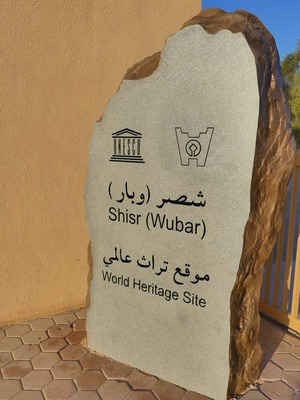 (photo by Clyde)
(photo by Clyde)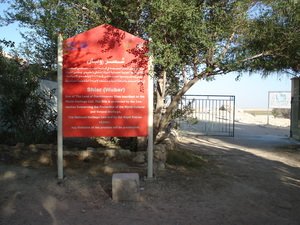 (photo by Jarek)
(photo by Jarek)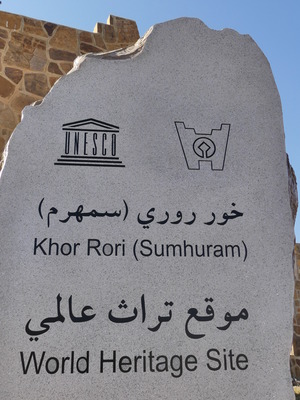 (photo by Clyde)
(photo by Clyde)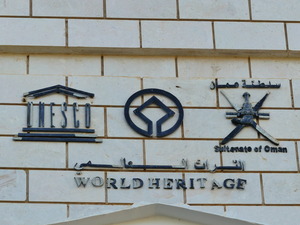 (photo by Clyde)
(photo by Clyde)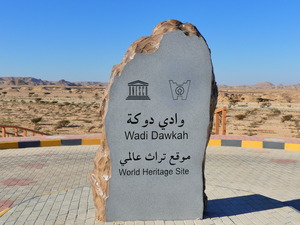 (photo by Clyde)
(photo by Clyde)